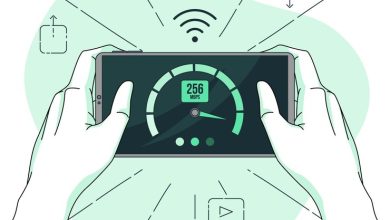What is Web designing and its types?

What is Web designing and its types?
Web design refers to the process of creating the visual and interactive elements of websites or web applications. It encompasses a wide range of skills and disciplines, including layout design, graphic design, user interface (UI) design, and user experience (UX) design. Web designers work to make websites both aesthetically pleasing and user-friendly, ensuring that they function well and provide a positive experience for visitors. There are various types of web design, each with its specific focus and purpose:
Static Web Design
Static web design involves creating web pages with fixed content that doesn’t change unless manually updated. These are simple websites with no interactivity and are primarily used for displaying basic information.
Dynamic Web Design
Dynamic web design involves creating websites that display different content to users based on their interactions, preferences, or other factors. This often requires server-side scripting and databases to generate content on the fly. Content management systems (CMS) like WordPress are examples of dynamic web design.
Responsive Web Design
Responsive web design focuses on creating websites that adapt and display correctly on various devices and screen sizes, including desktops, tablets, and smartphones. It uses flexible layouts, media queries, and fluid grids to ensure a consistent user experience.
Mobile Web Design
Mobile web design specifically targets the design and optimization of websites for mobile devices. It may involve creating separate mobile versions of a website or using responsive design to accommodate mobile users.
User Interface (UI) Design
UI design focuses on creating the visual elements and user interfaces of websites or web applications. It includes designing buttons, menus, forms, and other interactive elements to ensure they are visually appealing and intuitive for users.
User Experience (UX) Design
UX design is concerned with the overall user experience of a website or application. It involves optimizing the entire user journey, from navigation and usability to accessibility and content organization. The goal is to create a satisfying and efficient user experience.
Interactive Web Design
Interactive web design incorporates advanced interactivity and user engagement features, such as animations, transitions, parallax scrolling, and other dynamic elements that enhance user interaction.
E-commerce Web Design
E-commerce web design focuses on creating online stores and marketplaces. It includes features like product listings, shopping carts, secure payment processing, and product reviews.
One-Page Web Design
One-page web design, also known as single-page design, is a minimalist approach where all content is placed on a single, vertically scrolling page. It’s often used for portfolios, product launches, or microsites.
Minimalist Web Design
Minimalist web design emphasizes simplicity, clean lines, and a focus on essential content. It removes clutter to present information in a straightforward manner.
Flat Design
Flat design is a style that uses simple, two-dimensional elements and avoids realistic or three-dimensional design elements. It’s known for its minimalistic and clean look.
Material Design
Material design is a design language developed by Google that emphasizes the use of layers, shadows, and depth to create a visual hierarchy. It’s used extensively in Android apps and websites.
Web Designing course in Chandigarh sector 34 It often combine elements from different types of web design to create websites that meet specific requirements and user needs. The choice of design type depends on the project’s goals, target audience, and the devices on which the website will be accessed.
Why is typography important in web design?
Typography plays a crucial role in web design for several reasons:
Readability and Legibility
Typography directly impacts how easily users can read and understand the content on a website. The choice of fonts, font size, line spacing, and contrast can greatly affect readability. Well-designed typography ensures that text is legible and comfortable to read.
User Experience: Typography contributes significantly to the overall user experience. An effective typographic design can make content more engaging and user-friendly, leading to longer visits and improved user satisfaction.
Branding and Identity
Typography is a key element of a website’s visual identity. Consistent and well-chosen fonts contribute to brand recognition and help convey the website’s personality and style. It’s a way to reinforce brand values and messaging.
Visual Hierarchy: Typography helps establish a visual hierarchy on the web page. It guides users through the content by indicating which elements are most important and which are secondary. Effective use of fonts and text styles can draw attention to headlines, subheadings, and calls to action.
Content Organization
Typography aids in organizing content. It helps break down text into sections, headings, paragraphs, and lists, making the information more digestible and scannable.
Accessibility: Proper typographic choices are critical for making a website accessible to all users, including those with visual impairments. Web designers must consider font size, contrast, and font choice to ensure compliance with accessibility guidelines like WCAG (Web Content Accessibility Guidelines).
Mobile Responsiveness
In the era of mobile browsing, responsive typography is essential. Fonts and text sizes need to adapt to different screen sizes and orientations while maintaining readability and usability.
Emotional Impact: Typography can convey emotions and moods. Different fonts and text styles can evoke feelings of trust, friendliness, authority, or urgency, which is particularly important in marketing and branding.
Consistency: Consistency in typography across a website is important. It creates a harmonious and polished look. Using a consistent set of fonts and styles across the site improves the overall design.
Search Engine Optimization (SEO)
Search engines consider typography when ranking web pages. Properly structured text, with headings and subheadings, can improve SEO and help search engines understand the content.
Content Highlighting: Typography can be used to emphasize important content, such as keywords, quotes, or calls to action. Techniques like bold text, italics, and underlining can draw attention to specific elements.
Cross-Browser and Cross-Device Compatibility
Web designers must consider the compatibility of chosen fonts and text styles across various browsers and devices to ensure a consistent user experience.
Incorporating effective typography into Best Web designing course in Chandigarh requires a good understanding of typefaces, font pairings, spacing, and layout. Designers must balance aesthetics with practical considerations, such as user preferences, readability, and accessibility. A well-thought-out typographic design not only enhances the visual appeal of a website but also contributes to a positive user experience and the effective communication of content.
Read more article:- Smpupm.

